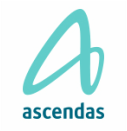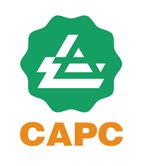
Training Content 培训内容
Over this 1-day course, we start with the ‘why’ and ‘what’ of effective communication, then follow with tactical strategies for ‘how’. Participants explore and learn ways to build empathy and interpersonal dialogue through leading communication techniques, and finally apply the skills they have learned to the challenging questions and situations they have identified within their own work. We anchor everything with high-impact experiential activities to anchor behavioral and mindset change.
在这一为期1天的课程中,我们从有效沟通的“为什么”(重要性)和“什么”(学员所面临的真实挑战)开始,然后遵循“如何”的战术策略。 参与者通过领先的沟通技巧探索、学习建立移情和人际沟通的方法,最后将他们学到的技能应用于他们在自己工作中发现的具有挑战性的问题和情境。一切都是基于影响力高的、能够使行为以及状态改变的体验式学习手段。
Everything is done with experiential learning techniques with practice opportunities leveraging application and feedback. The program is designed to deliver mindset, tools, and application around communication and team cohesion.
一切都是通过体验式学习技巧和利用应用和反馈的实践机会完成的。该培训项目旨在围绕沟通和团队凝聚力提供思维模式,工具和应用。
- 9:00 Experiential Activity – the “Shoe Game” 鞋子游戏体验式学习环节
- 9:45 The Empathy Map共感图
- 10:55 Break
- 11:05 Values Cards 价值观卡片
- 11:40 the Trust Equation 信任方程
- 12:00 Lunch
- 13:00 Active Listening倾听技巧
- 14:00 4F for Overcoming Difficult Questions and Conflict Resolution 用4F技巧回答难题和解决冲突
- Using Specific Language 具体语言沟通技巧
- Using Positive Language 正面语言沟通技巧
- 15:30 Assessing Product and Service Benefits with Negotiables Cards 用Negotiables来分析产品及服务的优势
- 16:00 Challenge Cards 挑战卡
- 16:30 Limiting Beliefs to Success Beliefs + Board Breaking限制性信念转换成功信念以及打破模板
Detailed Descriptions 详细描述
Experiential Activity – the “Shoe Game” ‘鞋子游戏’体验式学习环节
Theory and Application: A short, powerful activity designed to tangibly increase personal productivity and highlight the importance of communication. This quick, interactive exercise is designed to demonstrate the productivity gains that lie in empathizing and communicating with our coworkers.
理论与应用:简短有力的活动旨在有效提高个人生产力并突出沟通的重要性。 这个快速互动的练习旨在展示移情和与同事沟通的生产力提升。
Evaluation and Practice: Participants will conduct an experiential simulation exercise followed by a debrief discussion that will practically and tangibly frame the themes of competing work priorities and communication.
评估和实践:参与者体验模拟练习,然后进行汇总讨论,这将实际和有形地勾画出竞争目标和工作场所交流的主题。
Objectives: Trainees will experience first-hand the importance of effective communication when dealing with the multiple demands on their schedules and attention.
目标:受训者在处理他们的时间表和注意力的多重要求时,将亲身体验到有效沟通的重要性。
The Empathy Map 共感图
Theory and Application: An extremely useful tool to help participants learn to “put themselves in the shoes” of clients, key stakeholders, or even each other. This tool is also very effective at surfacing communicative conflicts and difficult questions.
理论与应用:一种很有力量的工具协助学员和客户、关键利益相关者、或甚至于其他学员换位思考。此工具在明确交际冲突和疑难问题方面也非常有效。
Evaluation and Practice: Participants take the perspective of the target persona, and brainstorm what they think and feel, see and hear, say and do, as well as the pains and gains that motivate that person’s behavior.
评估和实践:参与者从目标人物的角度出发, 头脑风暴分析他们的想法和感受, 看到的和听到的, 说和做, 以及得与失从而激励他的行为。
Objectives: Exploring other people’s perspectives, facilitating constructive dialogue and empathy among team members.
目标:探索他人的观点, 促进团队成员之间的建设性对话和共鸣。
Values Cards 价值观卡片
What are Values?: Values are things that we believe are truly important in the way we live and work. They act like our rocket fuel driving us forwards to our goals. When our personal values are broken, we feel upset; when our personal values are met, we will feel really satisfied. Every argument you have ever had has been based on conflicting values.
Participants are each given a set of Values Cards and, holding in mind their job and life, sort through the deck and place the cards in various stacks, one stack they feel resonate with their values as relate to their work and life, one stack that is only marginally important, and one that conflicts or brings up feelings of antipathy. Participants share their values with each other, and identify ones they plan to focus on for the year.
价值观是什么?:价值观是我们认为在生活和工作方式上真正重要的事情。就像火箭燃料推动着我们前往目标。当个人价值观受损时,我们会感到烦乱;当符合到个人价值观时,我们会感到非常满足。你会发现所有的爭執都是源自於价值观的不同/矛盾。
How Understanding your Values Helps You: By becoming more aware of your drivers in life and work, you can use your values as a guide to make more sustainable and satisfying decisions in any situation. Simply put, identifying your values rapidly increases your engagement in life and work.
The number one mistake in managing and motivating others is to project your own values onto theirs. Understanding your team-members differing values will help you communicate
with and motivate each other much more effectively.
价值观如何帮助您,也如何帮助您与别人相处:通过增强你对驱动力的意识,让价值观引导你在任何情况下做出更可持续和称心的决定。
管理和激励他人的头号错误是将自己的价值观投射到他人的身上,学会了解团队成员不同的价值观,将有助您更有效地沟通和激励他们。
Active Listening 倾听技巧
Theory and Application: Effective communication hinges on two key sets of skills, advocacy and inquiry. “Active listening” comprises our comprehensive set of tools for inquiry; by mastering these skills, we are able to significantly enhance our communication.
理论与应用:高效率的沟通技巧主要需要分成两个部分,倡导以及探究。‘倾听’就是我们探究用的一整套工具;掌握了这些能力并可以提升沟通效率。
Evaluation and Practice: Participants experience and learn the importance of active listening and explore common barriers to effective listening. They then practice and master 4 techniques for enhanced active listening: intention, focus, encouragement, and feedback.
评估和实践:参与者体验、学会倾听的重要性及好处以及探索听力的基础和普遍障碍。然后,他们掌握4种提升倾听能力的手段:a. 意图、b. 集中、c.鼓励、和 d. 反馈
Objectives: Learn techniques for increasing connection and buy-in from managers, coworkers, and clients, and increase overall communicative effectiveness.
目标:学会最能使你获得老板、同事、以及客户认可的办法,并提升沟通的有效性。
4F for Answering Difficult Questions and Conflict Resolution 用4F技巧回答难题和解决冲突
Theory and Application: Used everywhere from the United Nations to the Harvard Negotiation Project to numerous Fortune 500 companies, this is a powerful framework for handling conflict and difficult conversations effectively, in ways that bypass our usual automatic “fight or flight” defensive response and allow us to have real, important dialogues about the issues that matter at work and in our lives.
理论与应用:无论从联合国到哈佛谈判项目到无数财富500强公司, 此工具是有效处理冲突和困难对话的有力框架, 绕过我们通常的自动“战斗或飞行” 的防御反应, 让我们拥有针对工作或生活中的问题的真正的关键性的对话。
Evaluation and Practice: Participants learn a 4-part framework (the ‘4F Model’ of Facts,
Feelings, Findings, and Future) for effectively addressing difficult questions, negative feedback, and interpersonal conflict.
评估和实践:参与者学习一个4部分的框架(“4F 模型” 的事实, 感觉, 发现和未来), 以有效地解决困难的问题, 负面的反馈, 和人际冲突。
Objectives: Mastering one of the absolute most effective and practical tools for conflict resolution and communication.
目标:掌握解决冲突和沟通的绝对最有效和最实用的工具之一。
… as part of the NVC/4F framework, participants will also learn:
… 学非暴力沟通’和4F技巧的过程中,参与者也会学到:
1. Using Specific Language 具体语言沟通技巧
2. Using Positive Language 正面语言沟通技巧
Assessing Product and Service Benefits with Negotiables Cards 用Negotiables来分析产品及服务的优势
Theory and Application: Understanding the various features, attributes, and benefits that go into a successful product or service is key to highlighting the value of your offering, and for understanding the kinds of value to which key stakeholders respond.
理论与应用:能够很清楚地了解你的产品或者服务的主要优势以及特点相当重要,协助你强调你的解决方案所提供的价值。此工具也帮助你分析利益相关者所在乎的什么样的价值以及优势。
Evaluation and Practice: Participants use the cards to identify the predominant strengths, features, and characteristics of their offering, their competitors’ offerings, and key areas of interest for stakeholders.
评估和实践:学员用此卡片来分析他们公司以及竞争对手的主要的优势与特点,然后判断利益相关者所关心的方面。
Objectives: Gaining the ability to more confidently and effectively discuss their offerings.
目标:协助参与者更有信心地、更有效地去讨论他们的解决方案。
Challenge Cards 挑战卡
Theory and Application: The right mix of competition and collaboration fuel the group to arrive at solutions to the problems and conflicts they identified at the start of the workshop, and gain opportunities to apply their new tools and learning.
理论与应用:正确的混合竞争和协作使小组能够解决在讲习班开始时确定的问题和冲突, 并获得应用新工具和学习的机会。
Evaluation and Practice: Participants are divided into a “challenge team” and a “solutions team.” The challenge team tries to stump the solutions team with real and imagined difficult questions, and the solutions team deals with those challenges. When the solutions team is unable to come up with a satisfactory answer, both sides pause the game and work to devise a good solution before continuing.
评估和实践:学员分为“挑战团队” 和“解决方案团队”。挑战团队试图通过一些真实的或想象出来的困难问题来为难解决方案团队,解决方案团队想办法回答这些挑战性问题。当解决方案团队无法回答出满意的答案时, 双方暂停游戏, 并在继续之前一起设计一个好的解决方案。
Objectives: Applying the new tools and takeaways to actual and practical situations from their work life communication.
目标:将新的工具和知识应用到实际工作生活交流场景中。
Limiting Beliefs to Success Beliefs + Board Breaking限制性信念转换成功信念以及打破模板
Theory and Application: Our limiting beliefs prevent us from achieving our full potential at work and in life. By breaking through these limitations, we are able to achieve so much more.
理论与应用:我们的有限制性的信念阻碍我们在我们的工作以及生活中实现我们的潜能。一旦突破这些限制,我们立刻就可以实现的更多事情。
Evaluation and Practice: Participants collect the various limiting beliefs that are holding them back, and then reframe them as success beliefs. They then transfer these beliefs to both sides of a karate board, and, after learning the right system, vision, and mindset, break the boards with their hands.
评估和实践:参与者凑齐所有阻碍他们的限制性信念,把它们转换成成功信念,然后写在一块跆拳道木板的正反面。掌握了有效的方法、远景、以及状态之后,学员用手把木板打破。
Objectives: Applying the new tools and takeaways to change their mindset and go out ready to approach things in a new way.
目标:将新的工具和知识来改变参与者的心理状态,使他们做好准备出去用新的方式处理事情。











